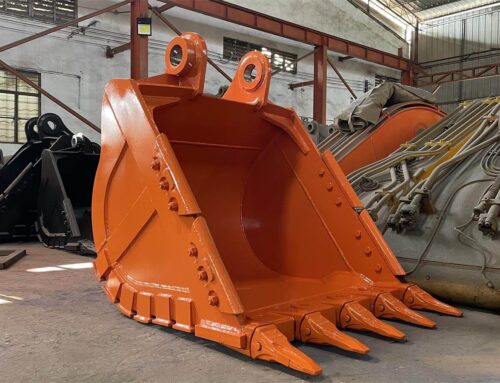Excavators are essential machines in the construction and mining industries, and their effectiveness largely depends on the condition of their buckets. These colossal machines can move mountains of earth, but the wear and tear on their buckets can significantly impact efficiency and safety. In this article, we will delve into the world of custom excavator buckets and discuss the matters that need attention in their daily use to ensure optimal performance and longevity.
The Anatomy of an Custom Excavator Bucket
Before we dive into maintenance tips, let’s understand the basics of an excavator bucket. An custom excavator bucket is a versatile attachment designed to scoop, lift, and transport various materials, including soil, rocks, and debris. Buckets come in different sizes and shapes, each tailored to specific tasks. The three main components of an excavator bucket are:
- Cutting Edge: The cutting edge is the front edge of the bucket that makes initial contact with the material being excavated. It is subject to the most wear and tear and requires regular attention.
- Teeth and Adapters: Teeth and adapters are attached to the cutting edge to help with digging and breaking up materials. These components should be inspected and replaced as needed.
- Bucket Body: The bucket body forms the main structure of the bucket and provides support for the cutting edge and teeth. Ensuring its structural integrity is crucial.
Now, let’s explore the key matters that demand attention in the daily use of custom excavator buckets.
-
Regular Inspections
One of the most critical aspects of custom excavator buckets maintenance is regular inspections. Daily pre-operation checks should become a routine. Look for cracks, dents, or signs of wear on the cutting edge, teeth, and bucket body. Any damage or wear should be addressed promptly to prevent further deterioration and potential safety hazards.
-
Tooth Maintenance
The teeth of an excavator bucket play a pivotal role in its performance. Dull or damaged teeth can significantly reduce digging efficiency. Regularly inspect the teeth for wear and replace them as necessary. Additionally, ensure that the teeth are properly tightened to prevent them from falling off during operation.
-
Cutting Edge Maintenance
The cutting edge is exposed to the most abrasive forces during excavation. As a result, it is prone to wear and should be regularly maintained. If you notice excessive wear or damage, it is essential to either sharpen or replace the cutting edge. A sharp cutting edge not only increases digging efficiency but also reduces fuel consumption.
-
Lubrication
Proper lubrication is crucial for the moving parts of an custom excavator buckets, such as the pivot points and hydraulic cylinders. Regularly grease these components to reduce friction and extend their lifespan. Neglecting lubrication can lead to premature wear and costly repairs.
-
Material Selection
Excavator buckets are made from a variety of materials, including steel and alloys. The choice of material depends on the type of work the excavator will perform. It’s essential to select a bucket made from materials that can withstand the specific demands of the job. For instance, if the excavator will be used in rocky terrain, a bucket with high-strength steel and wear-resistant materials should be chosen.
-
Proper Operation Techniques
The operator’s skill and technique also play a significant role in bucket longevity. Using the bucket to pry or hammer materials can cause unnecessary stress and damage. Operators should be trained in proper excavation techniques to minimize wear and tear.
-
Cleaning and Storage
After a day of hard work, it’s essential to clean the bucket thoroughly to remove any debris and prevent corrosion. Proper storage, such as keeping the bucket off the ground to avoid moisture, can also extend its lifespan.
-
Maintenance Records
Maintaining detailed records of maintenance and inspections is essential. These records can help identify patterns of wear and enable timely replacements. They also assist in tracking overall bucket performance and cost-effectiveness.
Conclusion
Excavator buckets are the workhorses of construction and mining operations, and their maintenance is critical to ensure safety, efficiency, and longevity. By paying attention to regular inspections, tooth and cutting edge maintenance, proper lubrication, material selection, operation techniques, cleaning, and record-keeping, operators and owners can maximize the value of their custom excavator buckets. With careful attention to these matters, excavator buckets will continue to dig deeper, making construction and mining operations more efficient and sustainable.








Leave A Comment